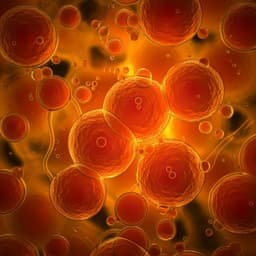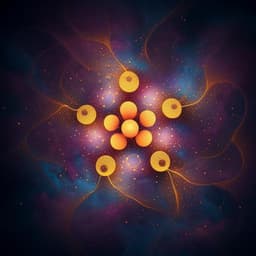
Chemistry
Instantaneous fibrillation of egg white proteome with ionic liquid and macromolecular crowding
P. Bharmoria, D. Mondal, et al.
This groundbreaking research led by Pankaj Bharmoria and colleagues reveals a revolutionary method for producing protein fibrils from egg white in mere seconds! Utilizing cholinium tosylate, this quick and cost-effective approach overcomes the limitations of traditional methods, showcasing enhanced mechanical properties and cytocompatibility in the resulting fibrils. Discover how this could transform enzyme support technologies.
Playback language: English
Related Publications
Explore these studies to deepen your understanding of the subject.







